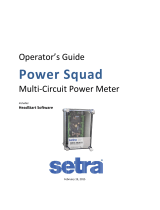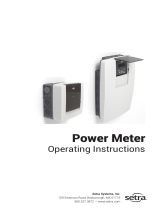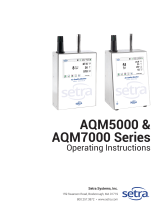
Table of Contents
INTRODUCTION .......................................................................................................................... 1
The Power Patrol Power Meter ............................................................................................................... 1
Power Patrol Meter Safety Summary and Specifications ........................................................................ 1
Symbols on Equipment ............................................................................................................................ 2
Power Patrol Résumé de Sécurité et Spécifications ................................................................................ 4
Symboles des Equipements ..................................................................................................................... 4
Power Patrol Meter Technical Specifications .......................................................................................... 6
FIELD INSTALLATION .................................................................................................................... 8
Mounting a Power Patrol Meter .............................................................................................................. 8
Wiring Connections on a Power Patrol Meter ......................................................................................... 8
Wiring CTs ................................................................................................................................................ 9
CT Wire Lead Polarity .........................................................................................................................................9
Connecting a Communication Cable...................................................................................................... 10
Connecting via a USB Cable Adapter ................................................................................................................10
Connecting via a RS-485 Adapter .....................................................................................................................10
Installing the RS-485 Adapter to a Computer ..................................................................................................11
Connecting via an Ethernet Cable ....................................................................................................................12
Powering the Power Patrol
Meter ......................................................................................................... 12
Power Patrol Single-Phase Connections ..........................................................................................................12
COM—Communications LED ................................................................................................................. 13
Power Patrol (Serial & Ethernet Communication) ...........................................................................................14
Phase Verification .................................................................................................................................. 14
Verifying the Power Patrol Meter Setup Using the LEDs .................................................................................14
Phase Verification Error Table ..........................................................................................................................15
Power Patrol Meter Diagram ................................................................................................................. 16
COMMUNICATING WITH A POWER PATROL METER ........................................................................... 17
Setting the Network Address Switches .................................................................................................. 18
Installing the HeadStart Software and Communicating with the Power Patrol Meter ......................... 19
Communication Setup ......................................................................................................................................19
About IP Addresses ..........................................................................................................................................22
Connecting the Ports ........................................................................................................................................24
Establishing Communication Protocol ................................................................................................... 24
Using HeadStart Software...................................................................................................................... 25
HeadStart Screens ............................................................................................................................................25
Communication and Status Messages .............................................................................................................25
HeadStart Command Buttons ..........................................................................................................................25































